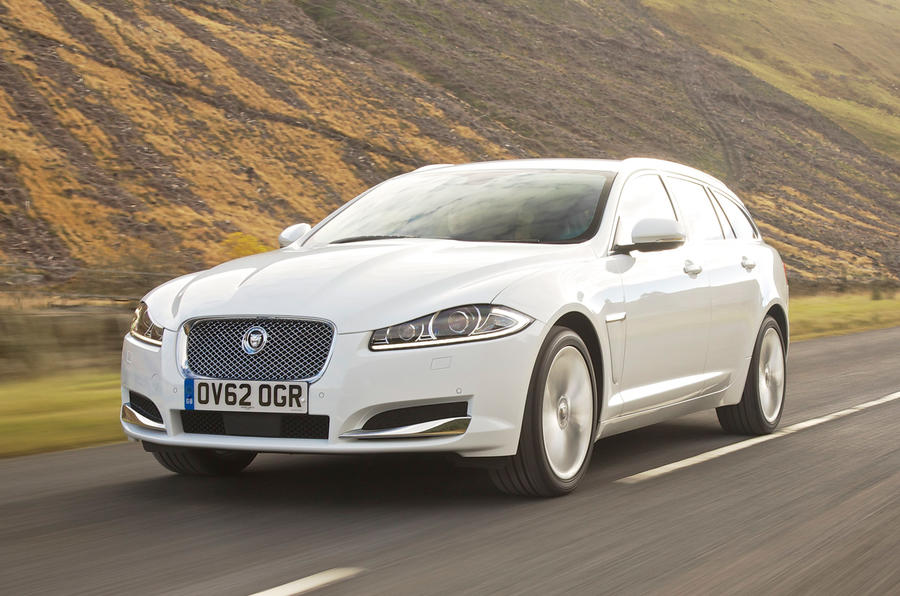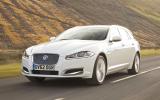What is it?
The engine that currently accounts for around 70 per cent of Jaguar XF sales, in the new bodystyle that’s tipped to take a third of Jaguar’s sales in the executive car sector.
The Jaguar XF Sportbrake isn’t the first time that Jaguar has built an estate – that privilege belongs to the X-type – but it is the first time the Midlands manufacturer has developed one using its own platform.
Jaguar says it benchmarked the XF Sportbrake against the Audi A6 Avant, a car which it virtually matches for luggage capacity, with between 550 and 1675 litres of space. To these eyes, Ian Callum’s design team has set a new benchmark for estate car styling in the class. The Sportbrake is new from the B-pillars back. The subtle tapering of the rear has been reduced to increase space in the back and the rearmost-pillars feature a similar gloss black treatment as the XJ flagship.
The 2.2-litre unit tested here is already in service in the XF saloon, and has proved a sales success with its significantly reduced running costs while sacrificing little of the muscular, powerful appeal Jaguars are famed for.
That powerplant is provided in both 160bhp and 197bhp output, with matching economy figures of 135g/km and 55.4mpg.
What's it like?
The 197bhp version of the PSA-sourced 2.2-litre turbodiesel is a strong performer. We’ve been critical of the performance offered by the range-topping 3.0-litre diesel S, but with the prospect of more than 55mpg on tap, the 8.9sec 0-62mph time is more than adequate. Its point-to-point pace impresses, but it doesn’t feel exceptionally quick from step-off.
That has as much to with the impressive refinement as the adoption of an eight-speed ZF automatic gearbox. The engine is rarely stressed, and at a motorway cruise engine, wind and road noise is absent. Such is this level of luxury car refinement that it’s easy to step into an unintentionally brisk pace.
The XF’s delicate steering remains, and there’s barely any difference between the saloon and estate, despite the extra 70kg that the Sportbrake carries over the saloon. The steering is light but breathtakingly effusive, and the Sportbrake is every bit as wieldy as the four-door.
Self-levelling suspension, standard on all Sportbrakes, helps to retain that linear feel even when the car is fully laden, as we discovered during a track session carrying a fridge in the boot. More impressive is the ride quality, which flattened out the worst of the potholed and scarred Tarmac on our Scottish test route. It feels like a car that has been developed in Britain, for Britain.
Cabin space up front is beginning to feel a little cramped, so light coloured interior trim helps instil a feeling of space. The flip-out airvents and pop-up gear selector have lost none of their appeal. The rear passengers enjoy an additional 48mm of headroom than in the saloon. A power tailgate and retaining bars which slot into rails in the boot aid practicality further, as does a removable panel which allows the obligatory set of golf clubs to be stowed east-west.
Should I buy one?
If you can live without the straight-line pace, then yes. The 2.2 starts at a shade under £32,000 for the low-power 2.2, but the 197bhp unit tested here is another £3500. That’s money that’ll likely prove well spent as its around two seconds faster to 62mph.























Join the debate
Add your comment
Get it Right . . . . .
1. There is no coupe XF . . its a Luxury Saloon.
2. The sportbrake is not ground-up but, as X type, based upon the saloon underbody.
3. The black-out trim is on the E post, not the C pillar.
No, it IS on the d pillar -
No, it IS on the d pillar - you dont count the dividing bar for the rear quarter light as a pillar.
British Lemons
Let's refrace that Mini 27th Jag 28th bottom of chip pan as usual,of interest CONSUMERS REPORT March issue road tested a new Range Rover Evoque and on their high speed salem course came close to rolling it when one of the rear wheels started to rise up and came close to rolling over along with a few other issues the vehicle received a not recommended to buy.Consumers Report road tests are highly respected here in North America.
Reliability ?.
I note in the latest Consumer Reports Reliability Survey of 28 car brands Jaguar finished Dead Last,follow by the Mini.
reidbrand wrote: I note in
????? If Jaguar finished last, how can if be followed by mini?